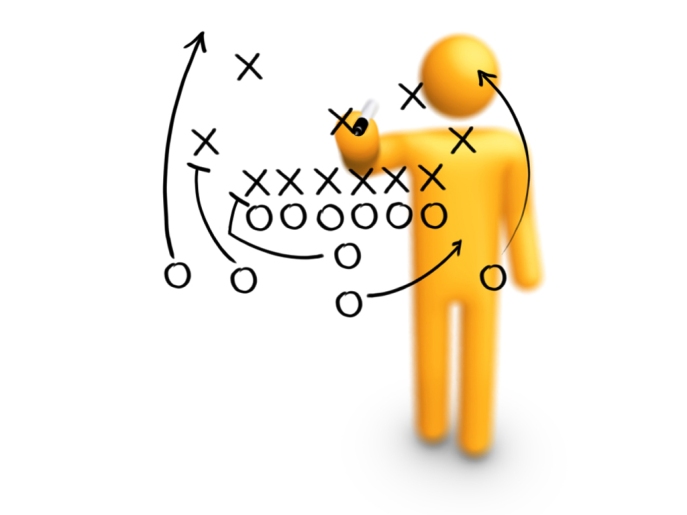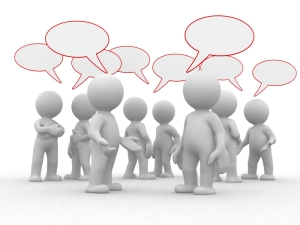 When people think about change toolkits, they generally think about things like assessments, guides, white papers, and the like. Those may be important, especially when engaged in organizational change. But that is not what I am talking about here. I am addressing those things that are inside of you and help or hinder you as you navigate change.
When people think about change toolkits, they generally think about things like assessments, guides, white papers, and the like. Those may be important, especially when engaged in organizational change. But that is not what I am talking about here. I am addressing those things that are inside of you and help or hinder you as you navigate change.
In June 1990, I was laid off. It wasn’t the first–or last–time I was out of work. This instance stands out in my mind because of one particular question in a book that I found helpful at the time. The book was Fired for Success. The question was, What do you do like breathing?
What an important question to ask as you think about your change toolkit! What do you do like breathing? What is it that comes so naturally to you that you don’t even know that it is there? What do you do with such unconscious competence that you don’t even see it as a strength?
One challenge of unconscious competence is that you can’t call on it when you need it… Either it works, or it doesn’t. On a bad day, it doesn’t. If you raise it to the level of consciousness, you can intentionally apply it when it is needed.
Below are some of the most significant “tools” in a strong change toolkit. Some you may “do like breathing,” others you may be okay at, and others you may not do at all well. You definitely want to know your strengths, and be prepared to apply them. Use this as a checklist for determining what is in your toolkit, what you need to strengthen, and what you have to add. Remember the old adage, If all you have is a hammer, everything looks like a nail.
(Note that it doesn’t matter whether the change is personal, organizational, or societal, and it doesn’t matter whether you are leading the change, or are playing another role in its execution, these tools are all important. The list is in alphabetical order.)
Accountable: Whether this is a personal change or a global transformation initiative, if you do not hold yourself personally accountable for how it unfolds–if the organization and/or the people around you do not do likewise–it is unlikely to go well.
Ambiguity: Whatever your change, if it is big, you will be dealing with a great deal of ambiguity. Get used to it. You need incredible clarity on where you are going. You need incredible clarity on how you will know you are making progress, and how you will know when you have achieved success. And along the way, you need the ability to move through ambiguity. If you need “all your ducks in a row,” or to “know what’s waiting around the corner,” undertaking major change is not for you.
Big Picture; Little Details: You need to be able to see the big picture: Where is the change going? What will the journey be like? What is required to achieve success? How will we know when we have gotten there? And, you need to be able to define (and execute or have executed) all of the infinite number of steps required to successfully complete the change. You can fudge on the little details, if you have people that you can trust to fill in the gaps in your toolkit; if its an organizational change, you should step back from the details so you aren’t micro-managing. If you are in a leadership position, you can’t fudge on the big picture; you have to own that.
Boundaries: Know when to work, and when to step away.
Courage: Big changes are not for the timid; you will be stepping into the unknown over and over again. There are risks, many of which can be mitigated if you “know the patterns” (below); but they are real, and they can be scary!
Decisive: If the change is big, you need to be able to make decisions, and act on them. And, you need to be able to do so even when the information available to you is insufficient.
Hold On; Let Go: If you are to succeed, no matter what the change or what your role, you need to know what to hold onto, and what to let go of. And you need to know when to hold on, and when to let go. (also, see Mistakes)
Know the Patterns: This tool is fundamental to all the rest; in some ways it is “Tool # 1.” There is a clear set of patterns that underlie the human response to change. If you know the patterns, you can apply the other tools to help you successfully navigate your way through them. If you don’t, you are “flying blind.” You have tools, and you may be applying them…but you don’t really understand what is going on.
Mindful: Are you one of those people who remembers getting into the car in the driveway, and then finds yourself parking it at the office? Never assume anything about your change is so routine that you can do it on autopilot; you need to be mindfully attentive every time you touch it.
Mistakes: You will make mistakes along the way. Success requires recognizing them, admitting them (which may need to be a public process in some cases), learning from them, applying the lessons learned, and moving on.
Open to Diverse Perspectives: If you surround yourself with people who see the world through your eyes, they are going to miss the same things you miss. You need to be open to hearing a wide range of perspectives.
Pay the Price: Big change isn’t cheap, no matter what. There are some changes that may not cost a lot of money, but they still require an incredible investment of time, energy, personal power, etc. You cannot avoid paying the price, so it is better to pay it in prevention than in healing.
Reflective: Step back and think about your change periodically. Have things shifted in the environment that require adjustments to the plan, or even to the desired end state? What is going well, and what isn’t? How effectively are you executing your role(s) in the change, and what do you need to do differently?
Reframe: How many lenses do you have in your tool kit? Can you reframe how you see things? Can you reframe them so that others see them differently?
Resilience: How well, and how quickly, can you recalibrate to changes in expectations? For more details, see Resilience Is Critical When Facing Challenge.
Resolve: It may be that this is the best idea you ever had. It may be that you loose sleep every night over it. It may be that you “can’t afford to fail.” All of that may be, but in the absence of resolve, it will fail. Big change means a difficult journey; you will need resolve to get through it successfully.
Story Telling: You need to be able to move people’s hearts, and their guts, not just their heads. All the logic in the world cannot accomplish that. Story telling can.
Teamwork: You can’t do it alone. Even the most personal of changes, if it is major, requires skills and insights beyond what you possess. Day-to-day you may pride yourself on being an independent spirit. At work your people may love you because you protect them at any cost. But when it is time for change, you can’t be independent; you can’t be siloed.
Trust: You are not going to get through big change alone. It’s that simple. Even the most personal of big changes affects–and is affected by–others. You need to be able to trust, and you need to be trustworthy.
What You Need to Hear: Some people surround themselves with others who tell them what they want to hear; to some degree I guess we all like to have cheerleaders. But you also need to seek counsel from those who will tell you what you need to hear, even when you don’t want to hear it.
What do you do like breathing? What else do you have in your change toolkit? Comment below.




